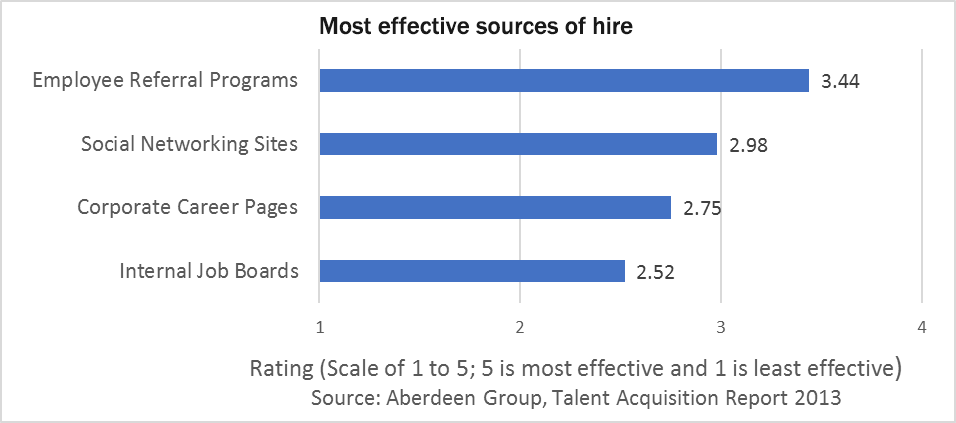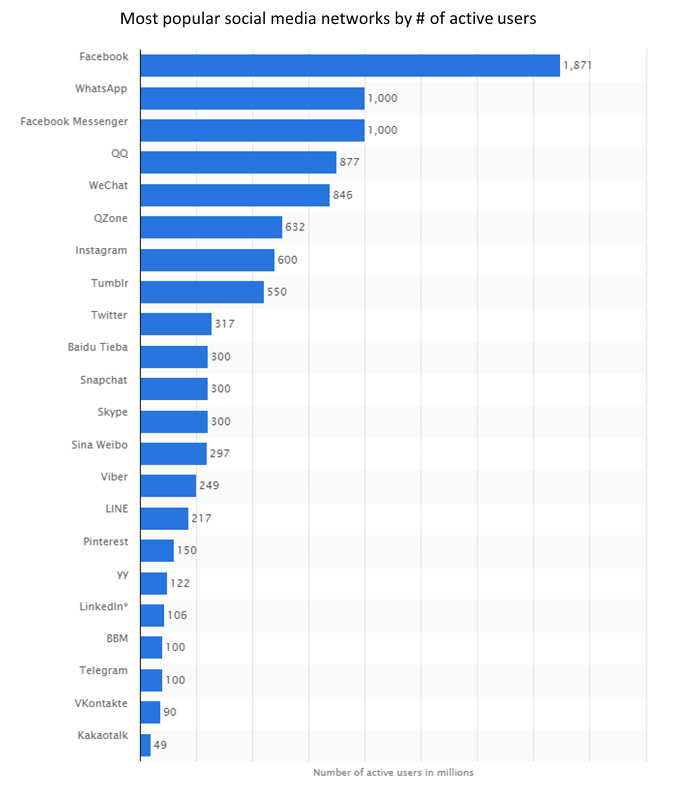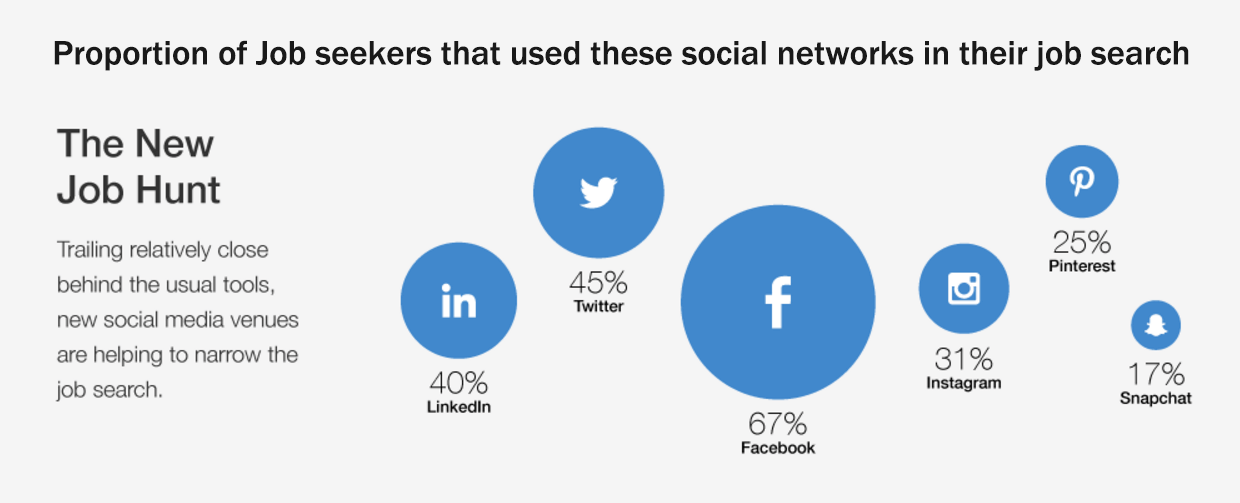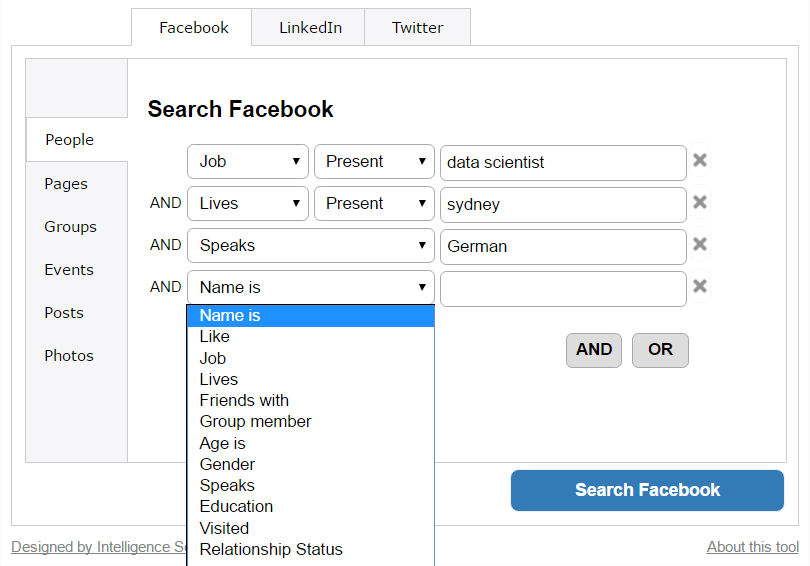Tip 1: Start social sourcing right now
If you’re not already stocking your recruitment pool from the greatest recruiters’ database the world has ever known (Facebook) you need to start right now.
In a 2015 survey of 1400 recruitment professionals, US recruitment services firm Jobvite found “93% of recruiters use or plan to use social media for hiring…”.
The almost universal adoption of social sourcing is because the approach works. Aberdeen Group’s Talent Acquisition Report 2013 noted that social networking sites had become the second most effective source of new hires in that year, up from third position in 2012. The report commented that social sourcing is seen as both efficient and cost-effective. Organisations are looking to social media due to increased costs and reduced effectiveness of external jobs boards and the ability to target passive (those not actively seeking a job) as well as active candidates.

Other direct benefits of social souring include: powerful searches for potential candidates; access to career histories; ability to spot friends of current employees; and a means to connect with people whose email and phone numbers you don’t have.
Despite the widespread adoption of social sourcing the Jobvite survey also found “…only 18% say they feel confident in their social media skills”.
Clearly there’s massive take-up of social sourcing but a gap in the skills required to unlock the riches of social networks like LinkedIn or Facebook. This paper provides some simple tips for getting started.
Tip 2: Create a strategy that leverages social
Don’t just wade in and start posting job ads on social networks. First work out how social sourcing fits within your overall recruitment strategy, and what you must do to make it productive. And while the focus of this paper is on building talent pools, don’t overlook other important elements in your social sourcing plan including building your employer brand on social networks and driving traffic to your own recruitment web pages.
Consulting outfit ScottMadden, in its whitepaper Key Social Networking Strategies for Talent Acquisition, says “The first step in executing this [social sourcing] strategy is defining key talent pools/pipelines for your organization”. The paper adds that the talent pool strategy must incorporate the “Hot Jobs” which are often tough to fill due to “a lack of qualified candidates with the necessary experience… or the demand for qualified candidates is extremely high due to industry growth”. Social sourcing can be highly effective in identifying talent for hot jobs due to the huge reach and rich data of leading social networks.
In a 2001 paper The Talent Acquisition Lifecycle, the Aberdeen Group says “ ‘Best in Class’ talent acquisition organizations share three common characteristics: the ability to define talent requirements that meet business needs; a culture where all employees view finding great talent as a part of their jobs; a focus on building relationships and talent pools that target critical roles with the greatest impact on organizational performance”.
Social sourcing supports the latter two of these themes – first by helping identify people who can fill critical roles, and second by utilising your employees’ social connections with potential hires to initiate and build relationships via “warm” introductions.
But don’t stop there: your social sourcing strategy must also specify what to do after you identify potential hires – including how to initially engage with them and build relationships as well as initiatives that encourage them to register for future opportunities.
Tip 3: Choose the right social network(s)
How do you decide which social network is best for sourcing? You will likely need to source across all the major networks but prioritise those that deliver the best ROI in the early stages of your roll-out. It depends on what exactly you’re looking to do. If it’s to build a talent pipeline of active and passive contacts for future hires, Facebook is the best bet due simply to its massive size and coverage (see chart from Statista below).

If you’re placing a job ad for a current vacancy LinkedIn may be a better option given it is known as a recruiting destination with a current job board.
There’s some conjecture over whether LinkedIn or Facebook provide more useable information for social sourcing. Some people say LinkedIn profiles, which are effectively online CVs, can be exaggerated and padded whereas Facebook, being a non-work network encourages more authentic profiles.
The answer may vary depending on what your organisation wants to do but the best social sourcing strategies will use a combination of these networks including Twitter depending on specific objectives. Obviously global businesses will also use country-specific networks like QQ, WeChat etc. For more information check out 26 Social Recruiting Stats & Facts!,a data-packed blog from Jobcast which does what it says on the tin.

Source: Jobvite’s 2015 Job Seeker Nation Study
Facebook is also more widely used by job seekers. Jobvite’s 2015 Job Seeker Nation Study says 67% of respondents used Facebook in their job hunt followed by Twitter (45%), LinkedIn (40%) and Instagram (31%).
As the topic of this blog is building sourcing pipelines rather than immediate hires we’ll focus on providing practical tips for talent searches on Facebook.
Tip 4: How to create searches in Facebook
Facebook’s inbuilt search has changed over time and isn’t the most user-friendly tool so use alternative utilities to simplify your searches. Intelligence Search, an extension for the Chrome browser, provides a simple option for searching Facebook (and LinkedIn and Twitter) while you’re logged in. (Note: I have no connection to the company that supplies this tool, and I’m not suggesting it’s the only option – it’s just one example of what’s available and what has worked for me).
You can search across a range of Facebook data including company, location, job title, language etc. as the screen shot below shows, and the list of matched people is displayed in the Facebook window. The image shows a search for German-speaking data scientists in Sydney – which found one person matching the criteria out of the 23 data scientists in Sydney.

Try experimenting by broadening and narrowing your searches according to your requirements and the number of matches you find. If your sourcing plan clearly describes critical jobs and information about competencies, education, job title and industry sector it’ll be easier to start your search.
One of the things to remember when searching on Facebook is that there are no ‘standards’ for how people describe themselves. Be aware that software developers may call themselves lots of things including ‘developer’, ‘SW developer’, ‘SW devt’, ‘programmer’ ‘code cutter’, and even ‘software developer’. Design your searches to ensure you include the most common descriptions and abbreviations as well as some of the less common ones. This is too detailed a topic to cover fully here but this helpful blog provides some excellent ideas about how to think outside the box on social media searches.
Try out some social sourcing on Facebook today to see how many prospective hires you can find, but don’t forget you’ll need an effective strategy to start engaging with them backed up by some effective employer branding.
Note: to use Intelligence Search you must change your language preference in Facebook Settings to ‘English (US)’ as that enables Facebook Graph Search).





Blog comments